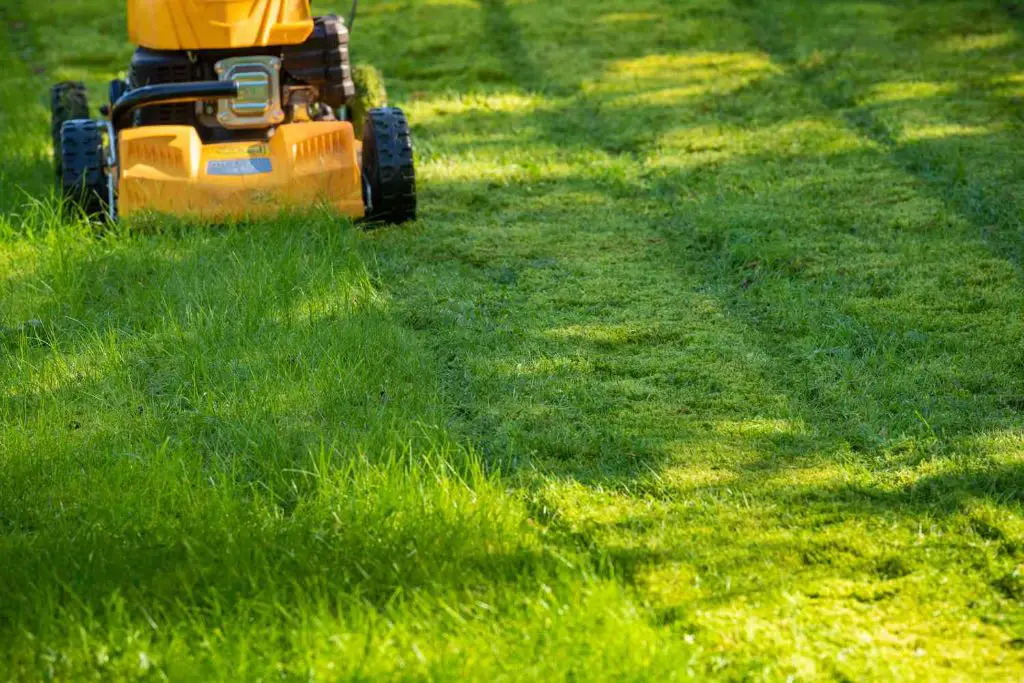Mowing your lawn is an important part of lawn care and maintenance in Virginia. Proper mowing frequency helps keep your grass healthy and lush. However, how often you need to mow depends on several factors.
Page Contents
Grass Type
The most common grass types in Virginia are cool season grasses like fescue, bluegrass, and ryegrass. These grasses grow more slowly in the hot summer months, so they don’t need to be mowed as frequently. Warm season grasses like zoysia, Bermuda, and St. Augustine grow more quickly in summer and require more frequent mowing.
Cool Season Grasses
- Fescue
- Bluegrass
- Ryegrass
These grasses grow vigorously in spring and fall but slowly in summer. In peak growing seasons, cool season grasses may need mowing 1-2 times per week. In summer, every 10-14 days is sufficient.
Warm Season Grasses
- Zoysia
- Bermuda
- St. Augustine
These grasses thrive in summer and may need mowing 2 or more times per week when actively growing. In fall and spring, they grow more slowly and can be mowed every 7-14 days.
Desired Lawn Height
Your desired lawn height also impacts mowing frequency. Shorter lawns need to be mowed more often. Taller grasses can go longer between mowings. Here are some common lawn height recommendations:
| Grass Type | Recommended Height |
|---|---|
| Fescue | 3-4 inches |
| Bluegrass | 2.5-3.5 inches |
| Bermuda | 1-2 inches |
| Zoysia | 1-2.5 inches |
Mowing more frequently is required to maintain shorter grass heights. If you prefer a taller lawn, you can mow less often.
Season
Weather and season also impact mowing needs. In peak growing seasons like spring and fall, you’ll need to mow more often to keep up with growth. When grass growth slows in summer or winter, you can mow less frequently:
Spring
Frequent mowing is needed in spring as warm weather causes grass growth to accelerate. Mow every 4-7 days to maintain an even lawn height.
Summer
Growth slows during hot, dry summer weather. Mowing every 7-14 days is often adequate during summer.
Fall
Expect vigorous growth in fall as temperatures cool and rainfall increases. Mow every 4-7 days to keep your lawn looking its best.
Winter
Little growth occurs during cold winter months. Mowing once every 10-14 days (or longer) is sufficient when grass is dormant.
Rainfall
The amount of rainfall impacts how fast your lawn grows. During periods of frequent or heavy rain, mowing more often will be required. Extended dry spells mean grass grows less quickly so mowing frequency can decrease.
Location in Virginia
Your specific location in Virginia impacts lawn mowing needs too. Northern areas of the state have cooler average temperatures, meaning grass grows more slowly. Lawns in southern Virginia experience warmer weather and need mowing more often. Elevation and proximity to mountains also affect temperatures and growth rates.
Northern Virginia
Areas like Alexandria, Arlington, and Fairfax have cooler weather than southern regions. Lawns here may require slightly less frequent mowing overall.
Central Virginia
Locations including Richmond, Charlottesville, and Lynchburg see warm summers and so-so winters. Lawns will need frequent mowing in spring and fall but less often in summer.
Southern Virginia
Warmer cities like Danville, Emporia, and Virginia Beach have long hot summers. Lawns will grow vigorously and need frequent mowing (or potentially year-round mowing).
Shade
Grass growing in full sun needs to be mowed more frequently than grass in shady spots. Areas that receive less sunlight grow more slowly. If your lawn has a mix of sun and shade, mow the sunny sections more diligently.
Fertilization
Applying fertilizer encourages grass growth, meaning more frequent mowing is needed. Around 1-2 weeks after fertilizing, expect to mow your lawn more often to keep height in check.
Irrigation
Watering your lawn frequently results in faster growth compared to relying only on rainfall. Proper irrigation is essential during summer dry spells. But you’ll need to mow more often when watering regularly to maintain your desired height.
Conclusion
No definitive answer exists for how often to mow a lawn in Virginia. The proper mowing frequency for your yard depends on the factors discussed. Observe your lawn and adjust mowing as needed based on growth rates. Here are some final tips:
- Mow often enough so no more than 1/3 of the grass blade is removed each time.
- Mow at the highest setting to encourage deeper roots.
- Use sharp mower blades for a clean cut.
- Let grass clippings decompose to nourish your lawn.
Pay attention to your specific lawn’s needs, and you’ll be rewarded with a healthy, lush yard all year long. Mowing at the right intervals will keep your grass looking its best throughout the seasons.
